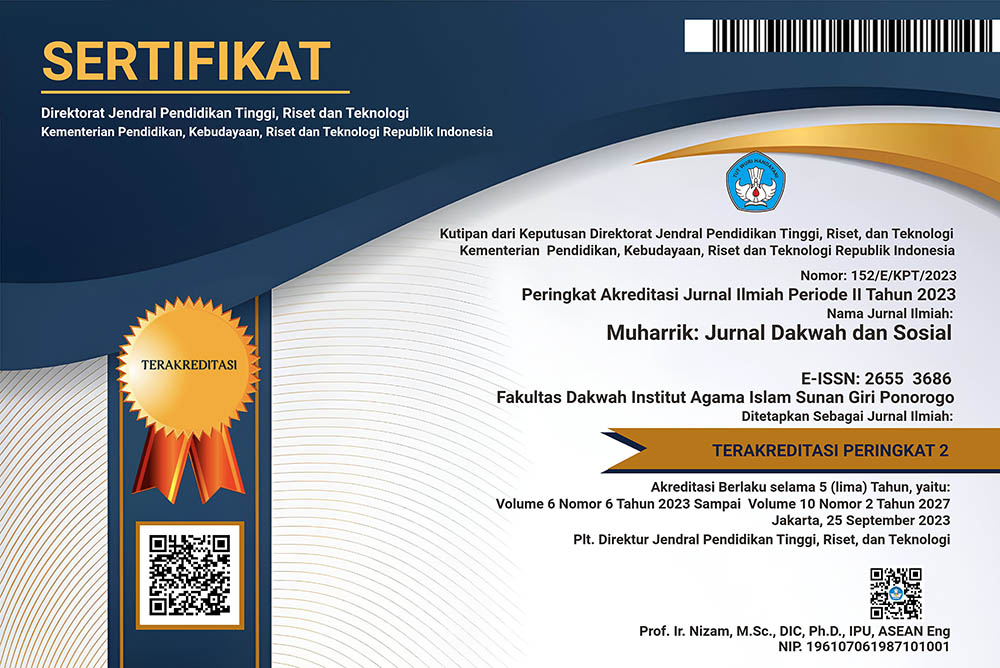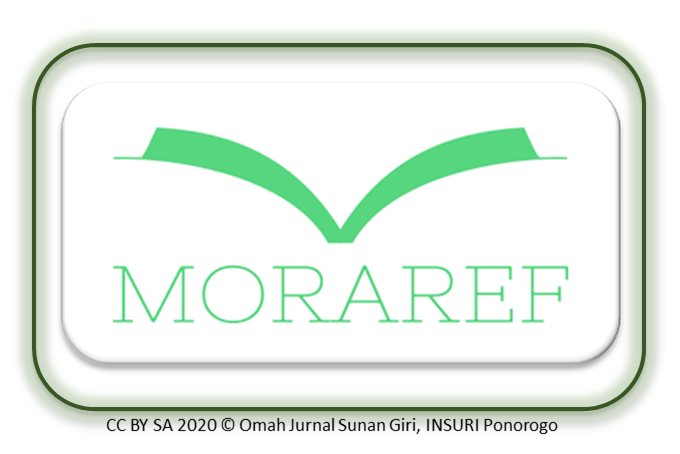The Communicative Unveiling: Bridging Reputation and Reality through Dialogue in Islamic Campus Accreditation
DOI:
https://doi.org/10.37680/muharrik.v6i1.4819Keywords:
accreditation, organizational communication, reputation, realityAbstract
This study investigates organizational communication's role in achieving superior accreditation at the State Islamic University of North Sumatra (UIN-SU). The research method used is mixed, with a survey-based quantitative approach using questionnaires to collect data from UIN-SU students, lecturers, and teaching staff and a qualitative approach through interviews with universities that have achieved superior accreditation. Data were analyzed using statistical analysis techniques and path analysis with moderating variables. The results showed that UIN-SU achieved a "B" (Superior) accreditation rating, which reflects a commitment to improving the quality of higher education services. The effectiveness of internal communication and the quality of external communication played a crucial role in achieving this feat. However, the participation of academic community members in decision-making did not have a significant impact, indicating the need to increase their participation and role in the accreditation process. In order to achieve higher accreditation in the future, UIN-SU needs to focus on improving organizational communication, supportive organizational policies and culture, and allocating adequate resources to support accreditation efforts and improve the quality of higher education.
Downloads
References
Brand, T., Goetjes, E., & Blankart, K. (2023). To Seek Program Accreditation, Innovation, or Both?—Examining the Interdependencies in High-Reliability Health Care Organizations. Schmalenbach Journal of Business Research, 281–302. https://doi.org/10.1007/s41471-023-00168-w
Brittingham, B. (2009). Accreditation in the United States: How did we get to where we are? New Directions for Higher Education, 2009(145), 7–27. https://doi.org/10.1002/he.331
Bukhari, S. M. B. R., Javed, T., & Nasir, A. (2021). Multi Analysis through Smart-PLS: Measuring of Organizational Performance Interplay. Global Social Sciences Review, VI(II), 224–237. https://doi.org/10.31703/gssr.2021(vi-ii).23
Davies, S. R. (2020). University communications as auto-communication: the NTNU ‘Challenge Everything’ campaign. Journal of Communication Management, 24(3), 227–243. https://doi.org/10.1108/JCOM-08-2019-0120
ECA. (2013). Learning Outcomes in Quality Assurance and Accreditation: Principles, recommendations and practice. European Consortium for Accreditation in Higher Education.
Edeh, E., Lo, W.-J., & Khojasteh, J. (2022). Review of Partial Least Squares Structural Equation Modeling (PLS-SEM) Using R: A Workbook. In Structural Equation Modeling: A Multidisciplinary Journal. https://doi.org/10.1080/10705511.2022.2108813
Elken, M., Stensaker, B., & Dedze, I. (2018). The painters behind the profile: the rise and functioning of communication departments in universities. Higher Education, 76(6), 1109–1122. https://doi.org/10.1007/s10734-018-0258-x
Herlina, Acim, Misnah, & Khairunnisa, R. (2019). Need Analysis of Use Google Form for Learning in Pgsd Fkip Tadulako University. Jurnal Dikdas, 7(2), 143–150.
Ibarra-Saiz, M. S., Lukas-Mujika, J. F., Ponce-Gonzalez, N., & Rodriguez-Gomez, G. (2023). University teachers’ perceptions regarding the quality of tasks assessing learning outcomes. RELIEVE - Revista Electronica de Investigacion y Evaluacion Educativa, 29(1), 1–20. https://doi.org/10.30827/relieve.v29i1.27704
Kim, Y. (2018). Enhancing employee communication behaviours for sensemaking and sensegiving in crises: Strategic management approach for effective internal crisis communication. Journal of Communication Management, 22(4), 451–475. https://doi.org/10.1108/JCOM-03-2018-0025
Koo, Y., Kim, S. J., & Song, J. H. (2022). The moderating effect of communication on congruence and incongruence of openness to change: is communication always beneficial for learning organization culture and knowledge sharing? Learning Organization, 29(2), 172–190. https://doi.org/10.1108/TLO-02-2021-0025
Lessy, D., Riaddin, D., Supriadi, N., & Sehuwaky, N. (2022). Implementasi Akreditasi Program Studi Berbasis 9 Kriteria Menuju Peringkat Unggul (Studi Kasus di Program Studi Pendidikan Matematika IAIN Ambon dan Program Studi Pendidikan Matematika UIN Raden Intan Lampung). Idaarah: Jurnal Manajemen Pendidikan, 6(1), 14–33. https://doi.org/10.24252/idaarah.v6i1.24521
López, D. A., Espinoza, O., Rojas, M. J., & Crovetto, M. (2022). External evaluation of university quality in Chile: an overview. Quality Assurance in Education, 30(3), 272–288. https://doi.org/10.1108/QAE-08-2021-0141
Lu, Y., & Wang, T. (2023). Quality Evaluation Model of Vocational Education in China: A Qualitative Study Based on Grounded Theory. Education Sciences, 13(8). https://doi.org/10.3390/educsci13080819
Palma, A., Mourato, J., Vinagre, J., Almeida, F., & Pessoa, A. M. (2023). Student Participation: Issues for the Governance of Higher Education. Societies, 13(5), 1–16. https://doi.org/10.3390/soc13050115
Raciti, M. M., & Dale, J. (2019). Are universities widening participation activities just-in-time or just out of time? Exploring the (mis)alignment between the timing of widening participation activities and university decision-making among students from low socioeconomic backgrounds. Student Success, 10(1), 47–58. https://doi.org/10.5204/ssj.v10i1.923
Reith-Hall, E., & Montgomery, P. (2023). Communication skills training for improving the communicative abilities of student social workers: A systematic review. Campbell Systematic Reviews, 19(1). https://doi.org/10.1002/cl2.1309
Schäfer, M. S., & Fähnrich, B. (2020). Communicating science in organizational contexts: Toward an "organizational turn" in science communication research. Journal of Communication Management, 24(3), 137–154. https://doi.org/10.1108/JCOM-04-2020-0034
Sutopo, Sugiyono, & Setiadi, B. R. (2019). Analysis of the accreditation grade of study programs in Indonesia higher education (Vol. 335, Issue ICESSHum). Atlantis Press. https://doi.org/10.2991/icesshum-19.2019.16
Tabiu, A. (2019). Do "high-performance" human resource practices work in public universities? Mediation of organizational and supervisors' support. African Journal of Economic and Management Studies, 10(4), 493–506. https://doi.org/10.1108/AJEMS-02-2019-0079
Downloads
Published
How to Cite
Issue
Section
License
The author(s) retain/s the copyright and grant/s Muharrik: Jurnal Dakwah dan Sosial the first publication rights licensed under the Creative Commons Attribution-NonCommercial 4.0 International (CC BY-NC 4.0) , which allows others to access (search, read, download and quote), share (copy and redistribute the material in any media or format) and adapt (mix, modify and develop) works for legitimate non-commercial purposes, with recognition of the authorship of the work and its initial publication in this journal.













